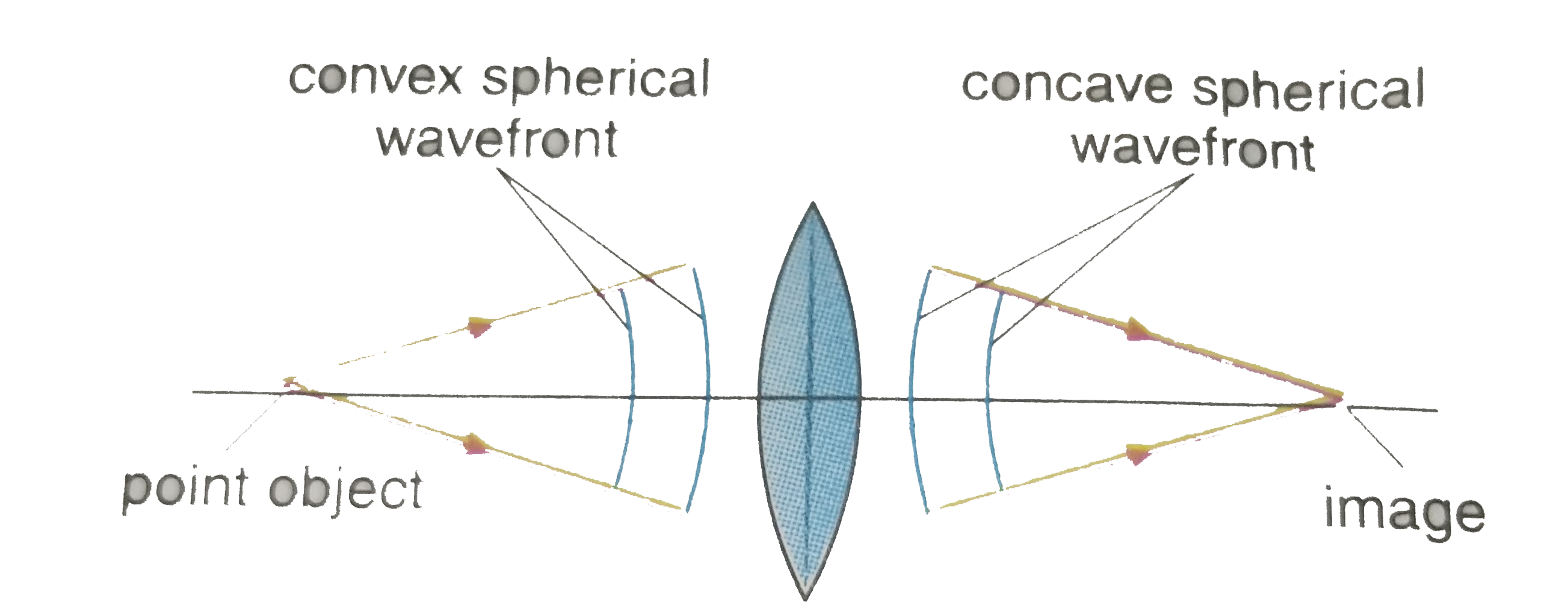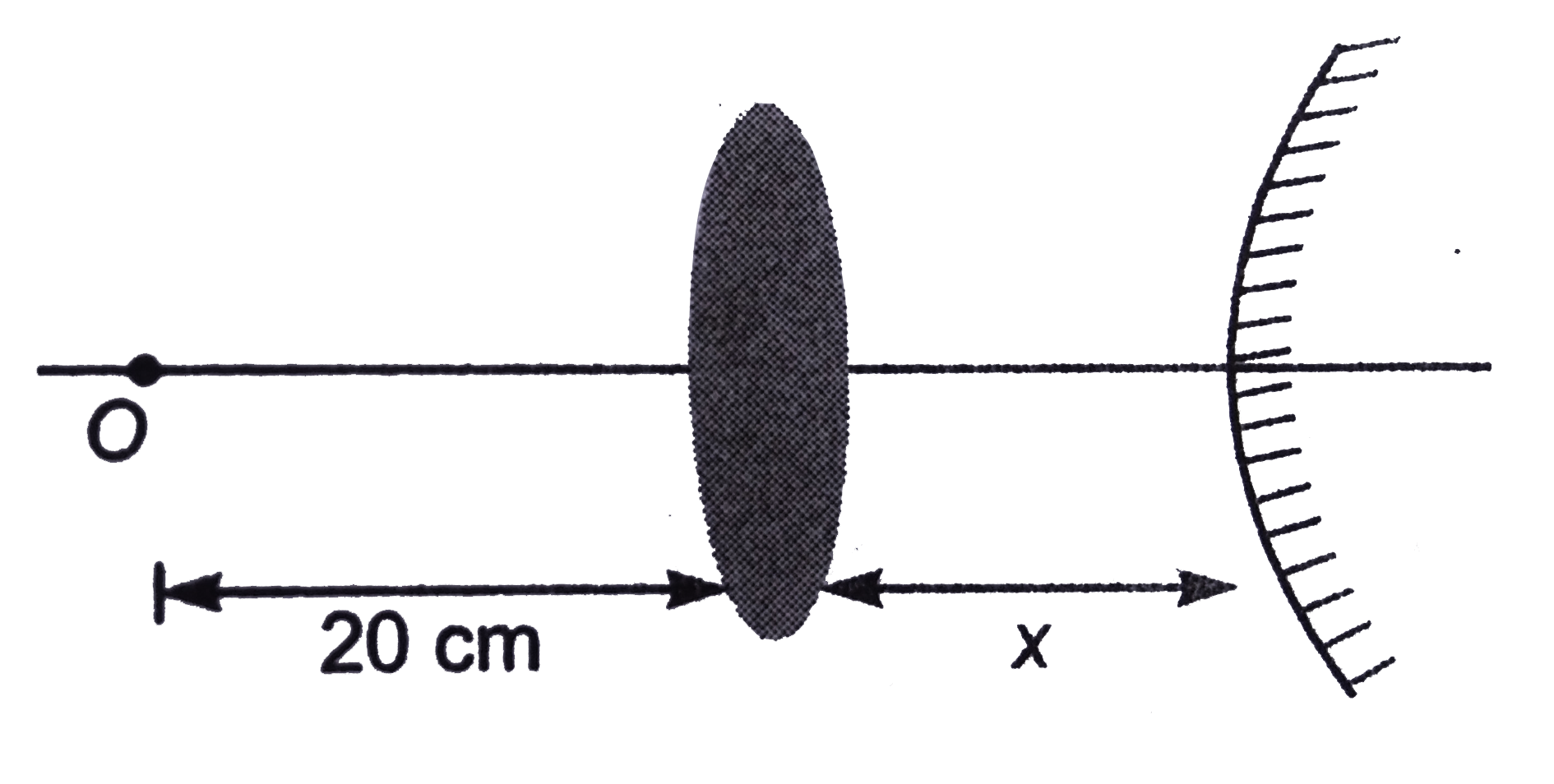A point object is placed on the axis of a convex lens at a distance greater than the focal length of lens. What is the rerfracted wavefront?
Wavefront of light rays emitted from a point source is spheric convex. After being refracted through the lens the wavefront becomes spherical concave . This implies that after refraction through the lens light rays converge.

Topper's Solved these Questions
- BOOK - CHHAYA PUBLICATIONCHAPTER - LIGHT WAVE AND INTERFERENCE OF LIGHT EXERCISE - NCERT TEXTBOOK QUESTIONS WITH ANSWER HINT13videos
LIGHT WAVE AND INTERFERENCE OF LIGHT
- BOOK - CHHAYA PUBLICATIONCHAPTER - LIGHT WAVE AND INTERFERENCE OF LIGHT EXERCISE - NCERT EXEMPLAR QUESTIONS WITH ANSWER HINT3videos
LIGHT WAVE AND INTERFERENCE OF LIGHT
- BOOK - CHHAYA PUBLICATIONCHAPTER - LIGHT WAVE AND INTERFERENCE OF LIGHT EXERCISE - Section Related Questions13videos
LIGHT WAVE AND INTERFERENCE OF LIGHT
- BOOK - CHHAYA PUBLICATIONCHAPTER - KIRCHHOFF'S LAWS AND ELECTRICAL MEASUREMENT EXERCISE - CBSE SCANNER16videos
KIRCHHOFF'S LAWS AND ELECTRICAL MEASUREMENT
- BOOK - CHHAYA PUBLICATIONCHAPTER - Magnetic Properties of Materials EXERCISE - CBSE SCANNER11videos
Magnetic Properties of Materials
Similar Questions
An object is placed in front of a converging lens at a distance greater than twice the focal length of the lens. Draw a ray diagram to show the formation of the image.
View SolutionA point object is placed on the optic axis of a convex lens of focal length f at a distance of 2f to the left it. The diameter of the lens d. An eye is placed are distance of 3f to the right of the lens and a distance below the optic axis. The maximum value of h to the image is
View Solution
Knowledge Check
- Question 1 - Select One
A point object is placed on the optic axis of a convex lens of focal length f at a distance of 2f to the left of it. the diameter of the lens is 'd' . An eye is placed at a distance of 3f to the right of the lens and a distance h below the optic axis. The maximum value of h to see the image is
AdBd/2Cd/3Dd/4 - Question 2 - Select One
A point object is placed on the optic axis of a convex lens of focal length f at a distance of 2f to the left it. The diameter of the lens d. An eye is placed are distance of 3f to the right of the lens and a distance below the optic axis. The maximum value of h to the image is
AdBd/2Cd/3Dd/4 - Question 3 - Select One
A point object O is placed at a distance of 20cm from a convex lens of focal length 10cm as shown in the figure. At what distance x from the lens should a convex mirror of focal length 60cm, be placed so that final image coincide with the object?
 A10cmB40cmC20cmDFinal image can never coincide with the object in the given conditions
A10cmB40cmC20cmDFinal image can never coincide with the object in the given conditions
An object 1 m tall is placed on the principal axis of a convex lens and its 40 cm tall image is formed on the screen placed at a distance of 70 cm from the object. What is the focal length of the lens ?
View SolutionA point object O is placed at a distance of 20cm from a convex lens of focal length 10cm as shown in the figure. At what distance x from the lens should a convex mirror of focal length 60cm, be placed so that final image coincide with the object?
 View Solution
View SolutionAn object 50 cm tall is placed on the principle axis of a convex lens. Its 20 cm tall image is formed on the screen placed at a distance of 10 cm from the lens. Calculate the focal length of the lens.
View SolutionAn object 50cm tall is placed on the principal axis of a convex lens. Its 20cm tall image is formed on the screen placed at a distance of 10cm from the lens. Calculate the focal length of the lens.
View SolutionDraw ray diagrams showing the image formation by a concave lens when an object is placed
(a) between focus and twice the focal length of the lens
(b) beyond twice the focal length of the lensView Solution

